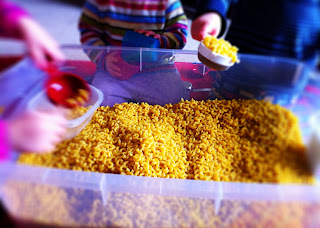Here are some of the articles I have found on the topic in addition to the Late Talker book. Read them and decide for yourself.
- Dyslexia, Dyspraxia and ADHD – Can Nutrition Help? This article nicely summarizes some of the actual research out there on fish oil supplementation and disorders. Note that in this article the term dyspraxia does NOT refer to apraxia of speech.
- Essential Fatty Acids This is a generic article on fish oil supplementation.
- Long-Chain Polyunsaturated Fatty Acids and Learning Disabilities This article talks about some of the research on fish oil supplementation and learning disabilities.
- Syndrome of Allergy, Apraxia, and Malabsorption: Characterization of a Neurodevelopmental Phenotype that Responds to Omega 3 and Vitamin E Supplementation This is a research article published in the Journal of Alternative Therapies in 2009. However, this research study did not have a control group, so although as a parent I am encouraged and interested, as an SLP I am still not convinced.
- The Omega Wave This is a pretty interesting news article on fish oil supplementation and learning disability, but it is just a news article, not a research article.
- Nordic Naturals Ultimate Omega LiquidThis is the product we eventually decided to use. We are not giving the recommended dosage for an adult. I am not going to tell you what we’re giving, because I’m not comfortable giving dosage advice. Make your own decision after reading the research yourself and consulting with your pediatrician.
You might ask how on earth we get our two year old to swallow a fish oil liquid. The answer is that we don’t. We disguise it as an after dinner “special treat”. Sometimes we mix it in with a couple of tablespoons of lemon flavored yogurt. Sometimes we mix it with raspberry sherbet. Sometimes we mix it in with those yogurt drinks they make with kids. She doesn’t even know it is there. Getting her to eat it is usually no problem at all.
The product is not fishy at all. If it tastes fishy or smells fishy it has spoiled. We store our bottle in the freezer to extend its shelf life.
Is it working? Who knows? Ava’s progress has been amazing. But we started the supplementation at pretty much the exact same time we started therapy. Who knows if it is the therapy or the Omega 3s or both?









